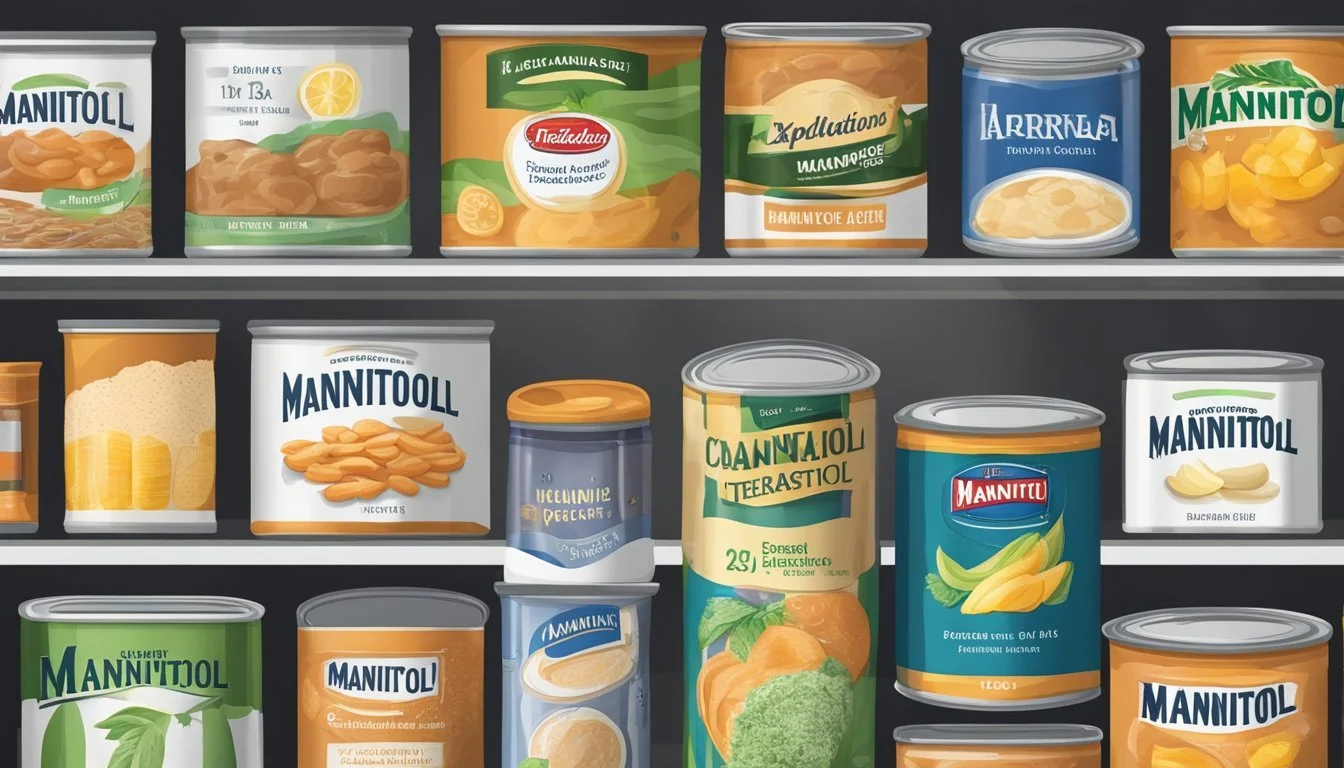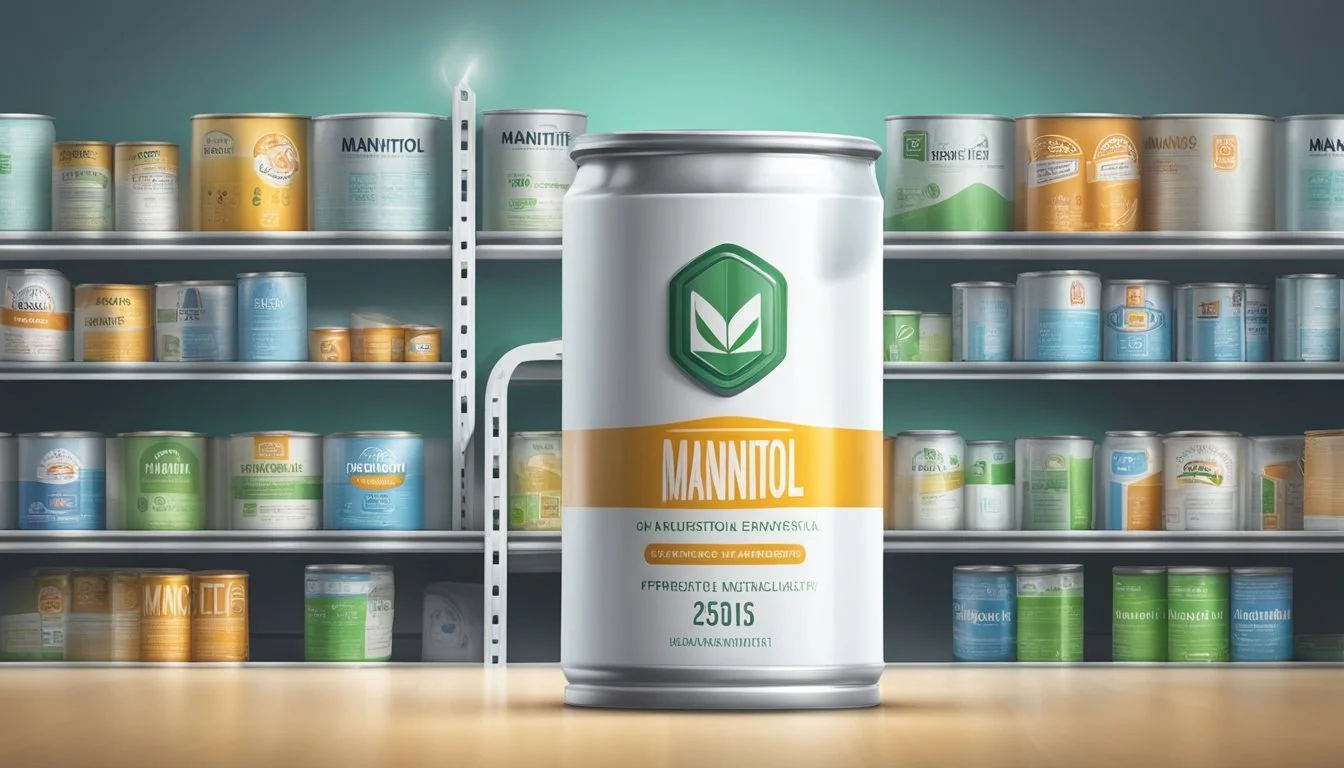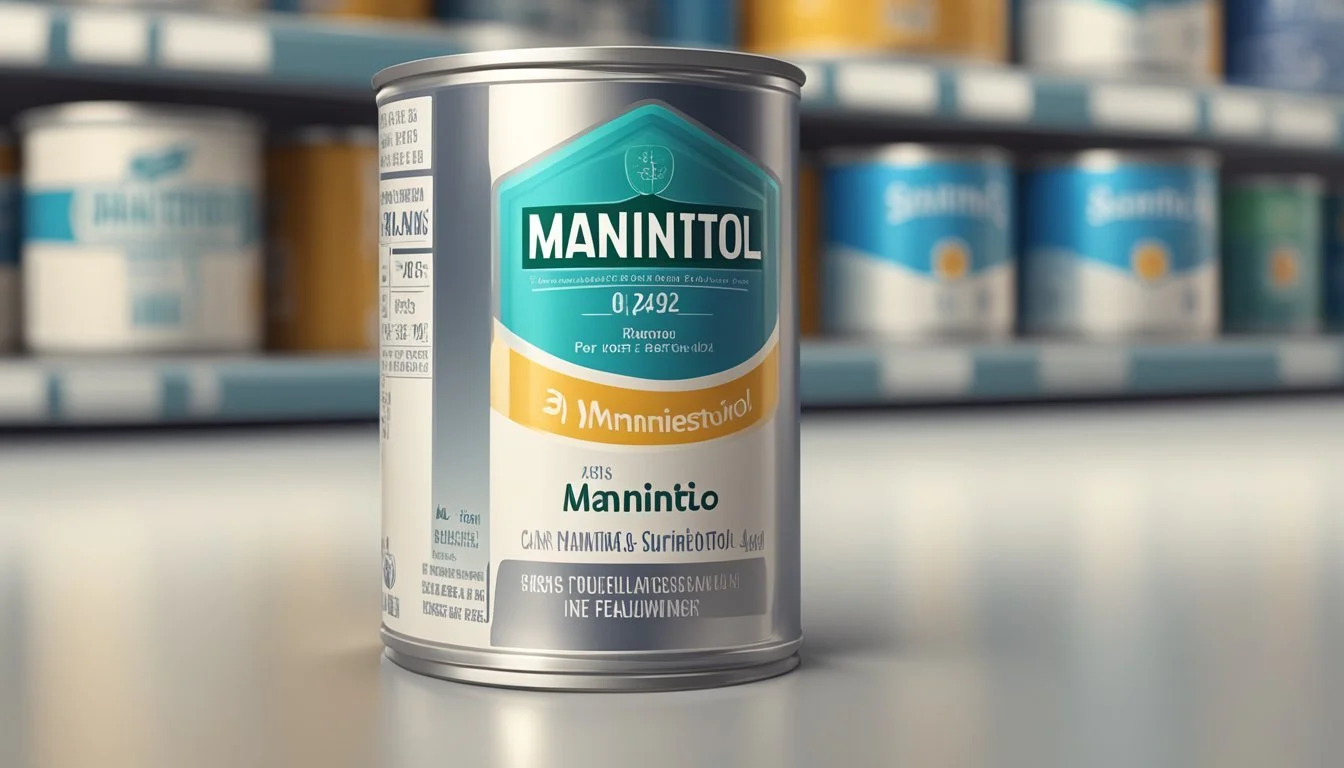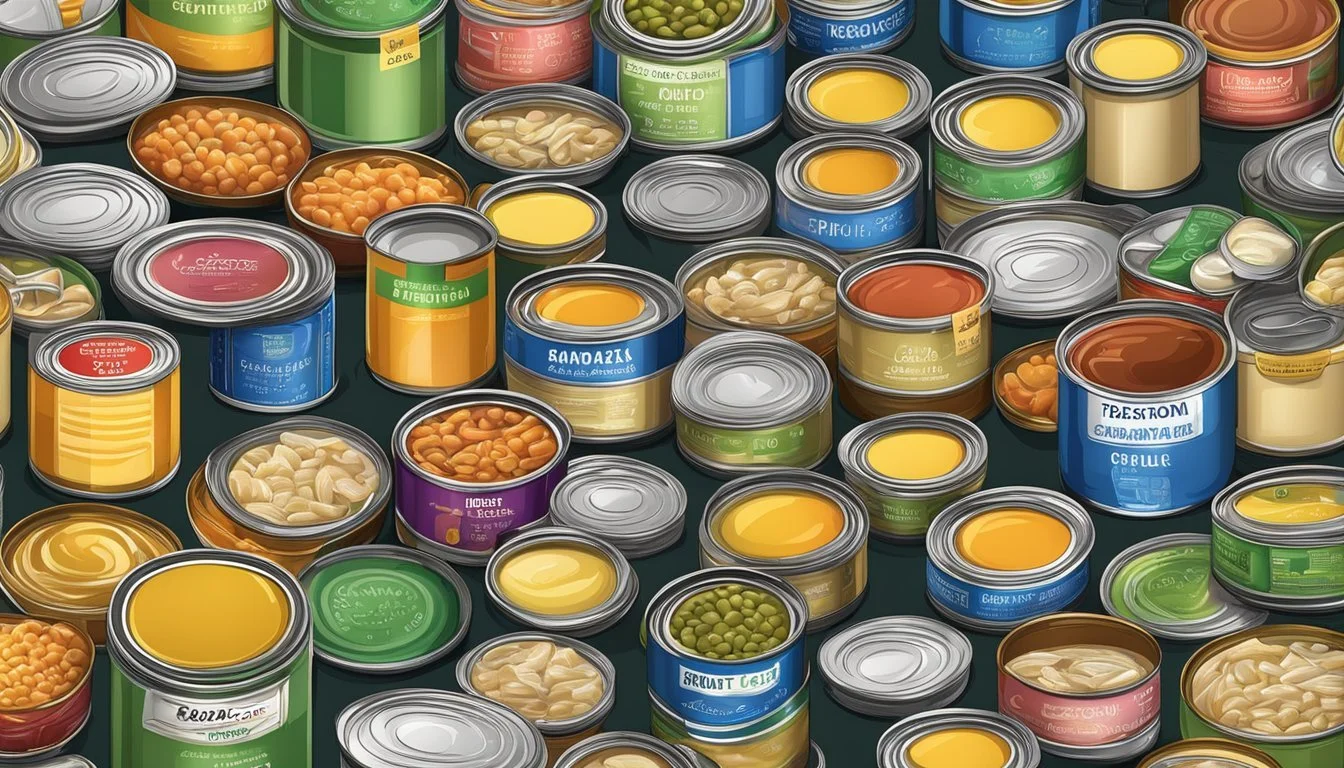How Long Does Canned Mannitol Last?
Understanding Shelf Life and Storage
When it comes to preserving the shelf life of pharmaceutical products, the stability of sweeteners such as mannitol is a key consideration. Mannitol is a type of sugar alcohol that is commonly used in the medical field for its diuretic properties and as a sweetening agent in chewable tablets or certain liquid medications. Unlike its application in food products, when mannitol is used in pharmaceuticals, it's not subject to the same degradation processes that typical foods undergo, and therefore its shelf life is governed by different factors.
Stability of canned mannitol can be influenced by a range of factors, including storage conditions, packaging integrity, and sterilization methods employed during the canning process. While no specific expiration date can be universally applied to all canned mannitol products, it is generally understood that if the can remains sealed and is stored correctly, away from extreme temperatures and direct light, the product can remain stable for extended periods. It is, however, critical to adhere to the expiration date provided by the manufacturer, as this takes into account the unique formulation and packaging considerations of the product.
Manufacturers of pharmaceuticals perform extensive testing to determine the shelf life of products like canned mannitol, ensuring that they remain safe and effective up to the marked expiration date. While it may be stable beyond this date, it is essential to consult with healthcare professionals and adhere to regulatory guidelines. These measures are designed to ensure patient safety and the efficacy of the medication, as the consequences of using degraded pharmaceutical ingredients can be serious.
Understanding Canned Foods
Canned foods are a staple in households and industries, offering the convenience of preservation and long shelf life. Across the globe, people rely on these goods for their everyday meals as well as emergency food supplies.
Definition and Types of Canned Goods
Canned goods refer to food products that have been processed and sealed in an airtight container. There are two primary types of canned foods:
High-acid foods: These include fruits, pickles, and tomatoes. They typically have a shelf life that ranges from 12 to 18 months.
Low-acid foods: This category encompasses meats, poultry, and most vegetables. Their shelf life can extend from 2 to 5 years.
Commercial vs. Home Canning
When discussing canning, it's essential to differentiate between commercial and home practices:
Commercially canned foods are processed at high temperatures to ensure sterilization and are known for their extended shelf life.
Home canned goods might not always reach the same level of sterilization due to equipment and temperature variance. Therefore, their shelf life is often shorter, and signs of spoilage should be more carefully monitored.
The Science Behind Canning
The science of canning revolves around eliminating microorganisms that cause food spoilage and creating a vacuum seal to prevent their return. During canning, foods are heated to a specified temperature and then cooled, causing the container to seal itself. This process profoundly extends the shelf life of foods, making them safe to consume for months or even years, as long as the seal remains intact and the can is free from damage.
Quality and Safety Considerations
When evaluating canned mannitol for use, it is critical to assess both the quality of the product and its safety. Quality can affect the efficacy of mannitol, while safety ensures the product is free from contamination risks such as bacteria and toxins.
Identifying a Safe Canned Product
The safety of canned mannitol hinges upon the integrity of the can's seal and the absence of indicators such as rust, dents, bulging, and leaking. Cans should be inspected before use; a compromised seal can introduce the risk of botulism, a serious bacterial illness. Food safety practices dictate that cans with any signs of damage should be discarded.
Rust: May compromise can integrity
Dents: Can indicate underlying damage to the seal
Bulging: Suggests possible bacterial growth and gas production
Leaking: Points to potential seal failure and contamination
Factors Affecting Quality of Canned Foods
Several factors influence the quality of canned mannitol, including storage conditions and time. Ideally, canned mannitol should be stored in a cool, dark place to prevent degradation of the product. While canned goods, when stored properly, can be safe for consumption as long as seals are intact, their quality may diminish over time, which could potentially reduce the mannitol's effectiveness.
Temperature: Should be cool
Light: Minimize exposure
Time: Quality best when consumed in a timely manner
Common Signs of Spoilage
Canned mannitol, like any canned product, can exhibit signs of spoilage. Users should look out for changes in color, smell, or texture that indicate a decline in quality. A foul odor or visual signs of bacteria growth, such as mold, signify that the mannitol is no longer safe to use.
Color: Any discoloration may suggest spoilage
Smell: Off odors are a clear sign of contamination
Texture: Unusual texture could indicate spoilage
It is crucial to maintain stringent quality and food safety standards when handling canned products to ensure they remain safe and effective for consumption.
Factors Impacting Shelf Life
The shelf life of canned mannitol, a sugar alcohol used as a sweetener and medication, is influenced by various factors such as temperature, acidity, and packaging conditions. Understanding these factors is crucial for maintaining the product's quality and efficacy.
Role of Temperature in Storage
Temperature plays a pivotal role in determining the shelf life of canned mannitol. Canned mannitol should be stored in a cool, dry place, away from direct sunlight or heat sources. Low temperatures help to extend the shelf life by slowing down the degradation process and inhibiting microbial growth. It is recommended to store canned mannitol at consistent temperatures between 50-70°F (10-21°C) to maximize its longevity.
Acidity and Its Effects on Shelf Life
The acidity level within canned mannitol can affect its preservation. Mannitol itself does not contribute significantly to acidity, but the pH level of any accompanying ingredients is key. Shelf-stable foods like canned mannitol often benefit from a lower acidity level, as higher acid content can lead to faster deterioration. Maintaining an optimal pH balance is essential to prevent spoilage and maintain a longer shelf life.
Packaging Integrity and Storage Conditions
Finally, packaging integrity and proper storage conditions are vital for the shelf life of canned mannitol. A vacuum seal is important to protect the contents from moisture and oxygen, which can lead to spoilage. Any breach in the seal could compromise the product, introducing contaminants that accelerate degradation. Containers should be routinely checked for evidence of damage or swelling, as these can indicate a loss of integrity. Ensuring that canned mannitol is stored in an appropriate storage container and kept in immaculate condition will help to preserve its quality over time.
Specific Shelf Life of Canned Mannitol
When discussing the shelf life of canned mannitol, it’s important to distinguish between various date markings on packaging. The expiration date refers to the last date on which the product is expected to maintain its peak quality when unopened and stored properly. Conversely, a sell-by date guides retailers on how long to display the product for sale, while a best-by date indicates the recommended time frame for using the product for the best flavor or quality.
The shelf life of canned mannitol can be influenced by several factors including storage conditions and the integrity of the can. Properly canned and unopened mannitol should maintain its quality for a considerable time if kept in a cool, dry place away from direct sunlight and temperature fluctuations.
Storage Recommendations for Canned Mannitol:
Temperature: Keep at a steady temperature range between 50-70°F.
Light: Store in a dark environment to prevent degradation.
Moisture: Avoid damp areas to protect the can integrity.
Date Markings Guideline:
Expiration Date: Adhere strictly as it indicates the end of the product’s optimal quality.
Best-By Date: Use as a guide for optimal taste and quality.
Sell-By Date: Typically for retailer use but can provide additional information on shelf life expectancy.
In conclusion, while an exact shelf life for canned mannitol is not typically specified due to its stable sugar alcohol nature, consumers should reference the best-by date for an optimal consumption period and ensure appropriate storage conditions to extend its shelf life as much as possible. It’s always prudent to inspect the can and its contents before use, regardless of the printed dates.
Extending the Shelf Life of Canned Goods
Proper storage and handling are crucial in extending the shelf life of canned goods, ensuring they remain safe and of good quality for consumption.
Best Practices in Canned Food Storage
Storing canned goods in a cool, dry place is vital for maintaining their shelf life. Temperatures should ideally be between 50-70°F (10-21°C). Cans need to be kept away from direct sunlight and areas where they may be exposed to moisture, which can lead to corrosion and compromise the can's integrity—thus shortening its shelf life. Shelves should be clean and sturdy to prevent cans from falling or being damaged.
Temperature: Keep at 50-70°F (10-21°C)
Environment: Dry, away from direct sunlight and moisture
Refrigeration and Freezing Options
Once opened, certain canned goods may need refrigeration to extend their lifespan. Foods like canned mannitol, if not used immediately, should be transferred to airtight containers and stored in the refrigerator. This storage method can usually preserve these foods for up to 3-4 days. Freezing is generally not recommended for canned foods, as it is unnecessary for shelf-stable products and can alter the texture and flavor of the contents post-thaw.
Post-Opening: Transfer to an airtight container; refrigerate
Shelf Life After Opening: Up to 3-4 days
Handling and Rotation of Stock
Proper stock rotation, known as "first in, first out," helps maintain the quality of canned goods. Individuals should always use older cans first before newer ones. Regularly inspecting cans for signs of damage, such as dents, leaks, or bulges, is crucial as they can indicate compromised safety. Cans showing these signs should be discarded. It is also important to handle cans with care, avoiding falls or heavy stacking, which can damage them and potentially lead to spoilage.
Stock Rotation: Use older cans first (first in, first out)
Inspection: Regularly check for dents, leaks, or bulges
Nutritional Impact
Canned mannitol, like other canned foods, retains its nutritional value for a considerable period, providing a stable option for both storage and use in dietary management.
Nutrition Preservation in Canned Foods
Canned products undergo a heat sterilization process aimed at destroying microorganisms to prolong shelf life. This process effectively preserves the nutritional content, specifically the mannitol content, in a sealed environment free from contamination. Mannitol, a sugar alcohol, maintains its role as a diuretic and a renal function management aid even when canned. The intrinsic qualities of mannitol—such as its caloric content and effects on osmotic balance—are largely unaffected by the canning process, meaning its nutritional and therapeutic benefits remain intact.
Comparison to Fresh and Frozen Produce
When comparing canned mannitol to its fresh and frozen counterparts, it's essential to consider the possible nutrient degradation that can occur over time. Fresh mannitol, while optimal for immediate use, can lose nutritional value quickly if not stored properly. Frozen mannitol retains most of its nutritional value due to the preservation technique, which halts enzymatic reactions that lead to spoilage. However, during the freezing process, some nutrient loss can occur, albeit minimal. In contrast, canned mannitol offers a consistent quality of the product over a more extended period. Nutrient retention in canned mannitol is high, ensuring that it remains a nutritious option, and is comparable to fresh and frozen forms, particularly where the mannitol content itself is concerned.
Special Considerations for Different Canned Food Types
The stability of canned foods greatly depends on their acidity levels, protein content, and the type of food item. These factors influence not only the shelf life but also the storage conditions and safety.
Acidic vs. Low-Acid Canned Foods
High-acid foods such as tomatoes, fruits like apples, plums, and berries, and juices have a naturally shorter shelf life due to the high acidity which can affect the can's integrity over time. Such items are generally best consumed within 18 months.
Contrastingly, low-acid foods including meats, vegetables like green beans, corn, carrots, beets, and peas, and soups tend to last longer — typically between 2 to 5 years. Tomato products, although acidic, are often treated to reduce their acidity, thus they can fall into the longer-lasting, low-acid category.
Shelf Life of Protein-Rich Foods
Canned proteins, particularly canned meats and beans, demand careful attention to storage. They should remain in a cool, dry place to maintain quality. Canned meats, being low-acid, have an extended shelf life, which can reach up to 5 years. However, always inspect cans for dents, rust, or bulging, as these are signs of potential spoilage or bacterial contamination.
Vegetables and Fruit Canning
The canning process of vegetables and fruits often involves adding preservatives or syrups that can also impact their longevity. Here's a brief look at the expected shelf life for a variety of canned goods:
Green beans and corn: 2-5 years
Tomato products: up to 18 months
Carrots and beets: 2-5 years
Peas: 2-5 years
Pumpkin: 2-5 years
Fruits (like peaches, pears, and canned berries): up to 18 months
Always check the integrity of cans prior to use and rely on "use by" and "sell by" dates as guidance rather than hard rules for consumption.
Health and Risk Factors
When storing canned foods like mannitol, understanding the role of microorganisms, like Clostridium botulinum, in food spoilage and the onset of foodborne illnesses is crucial for ensuring safety.
Understanding Botulism in Canned Foods
Botulism is caused by a potent toxin produced by the bacteria Clostridium botulinum. When improperly canned, foods become anaerobic environments, ideal for this pathogen to thrive and produce its toxin. Even a small amount of botulinum toxin can lead to severe food poisoning with paralysis and is often life-threatening. Food safety protocols must be strictly adhered to in order to prevent the growth and spread of this bacteria in canned goods, including those containing mannitol.
Prevention of Food Spoilage and Food Poisoning
To ensure canned foods like mannitol remain safe to consume, it's essential to:
Sterilize cans and lids prior to use to eliminate any existing bacteria.
Maintain a proper canning process, which includes heating the food to the correct temperature for the right amount of time to kill bacteria.
Store canned mannitol in cool, dry places to inhibit bacterial growth.
Additionally, any signs of spoilage such as bulging cans, leaks, cracks, or abnormal odors indicate possible food spoilage and food poisoning risks. These products should be immediately discarded. Always follow the expiration date provided by the manufacturer, as consumption past this date may increase risk due to breakdown of canning integrity or potential bacterial growth.
Emergency Preparedness with Canned Foods
When planning for emergencies, it is wise for individuals to consider the inclusion of canned goods in their supplies. These items are a popular choice due to their long shelf life and convenient nature. They are affordable options that provide a variety of necessary nutrients.
Canned goods are inherently shelf-stable, requiring no refrigeration before opening. This makes them ideal for scenarios where power is unavailable. They can be easily stacked and stored in a cool, dry place to maintain their longevity.
Non-perishable foods, such as canned beans, meats, and vegetables, ensure that one has access to a balanced diet in emergency situations. These items can last anywhere from 1 to 30 years depending on the type of food and storage conditions. Here's a quick reference:
Food Type Shelf Life Canned meats 4-30 years Canned vegetables 3-8 years Canned beans 3-6 years Canned fish 3-6 years Canned fruits 1-2 years
It's important to regularly check the expiration dates and maintain a rotation system to keep the stockpile fresh.
The convenience of canned goods lies in their ready-to-eat format, saving time and energy that might be limited during emergencies.
Individuals should be aware, however, that some canned products may have high sodium content or require water for preparation. Thus, one should also store sufficient clean water and consider the nutritional content while selecting canned items for their emergency storage.
Common Questions About Canned Food Shelf Life
Understanding the shelf life of canned foods, like mannitol, involves deciphering expiration labels and knowing how to handle potentially damaged cans to ensure safety and quality.
Decoding Expiration Labels
The shelf life of canned foods is often indicated by labels such as expiration date, best-by date, or sell-by date. An expiration date suggests when the food may no longer be at its peak quality, though it doesn't necessarily mean the food is unsafe to eat after this date. The best-by date is the manufacturer's recommendation for when the food will be at its best flavor and quality. A sell-by date helps retailers decide how long to display a product for sale. Canned mannitol typically falls into the category of a low-acid food product, which can last anywhere from between 2 to 5 years if stored properly.
How to Deal with Damaged Cans
Cans that show signs of damage, such as dented cans, leaks, or bulging, should be handled with caution. Dents can compromise a can's seal, and leaks may introduce bacteria that can spoil the content. Consumers are advised to discard any canned foods that have leaks, bulges, or rust that cannot be easily removed, as these are indicators that the contents may not be safe for consumption.
Conclusion
Mannitol, a sugar alcohol used as a sweetener or medication, is also found in certain canned products, particularly for those on low-sugar diets. Shelf life is a crucial aspect of canned mannitol products. The inherently stable nature of mannitol lends itself to a prolonged shelf life, which, when combined with the canning process, ensures a product that retains food quality over an extended period.
Canned mannitol typically remains in good condition for several years when stored properly in a cool, dry place away from direct sunlight. Manufacturers often provide a 'best by' date to indicate peak quality. It is important to note that this date is not an expiration date. Canned goods, including those with mannitol, can last beyond this timeframe without significant quality issues, though some degradation in taste, color, or texture may occur.
One should inspect canned goods regularly. Here's what to look for:
Seals must remain intact; bulging or rusted cans indicate potential spoilage.
Upon opening, the contents should be free from off-odors or discoloration.
Consistency should be stable, without unexpected textural changes.
In terms of food quality, it is always optimal to consume canned products, including those with mannitol, before the 'best by' date. This ensures that consumers experience the intended flavor profile and texture of the product. If a consumer finds a canned mannitol product that is past the 'best by' date, it is advisable to thoroughly evaluate it for signs of quality degradation before consumption. Safety is paramount, but one can be confident that canned mannitol often remains stable well beyond its listed date.











